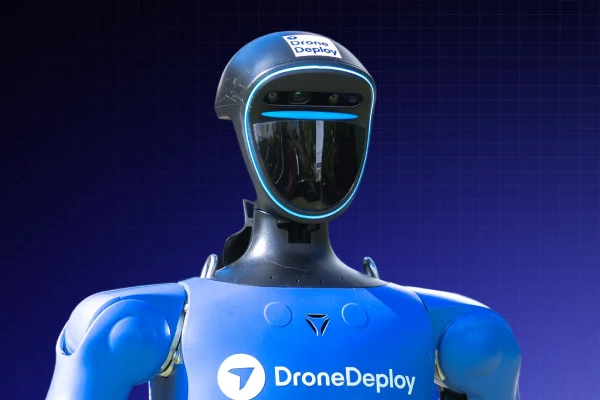How to Streamline Methane Tracking with Drones and Robots
Quick Summary
There is a reason why methane gas emissions have become a central topic of the climate change discussion. Across a variety of industries, measuring and reducing methane emissions is now a key strategic focus and it's directly influencing the way many companies operate across multiple industries. While there are a lot of factors at play contributing to climate change —methane gas is near the top of the list.
What is methane gas? Methane gas is a potent greenhouse gas that is responsible for a whopping 20% of global warming emissions. 80 times more powerful than carbon dioxide, methane gas is incredibly effective in trapping heat in the atmosphere. As a result, companies in the energy, agricultural, and commercial sectors are racing to not just prevent potential leaks but monitor and reduce methane gas emissions altogether.

What is Methane Gas and Where Does it Come From?
Methane gas is one of many natural gasses already present in the Earth’s atmosphere. Much like carbon dioxide, some level of methane in the atmosphere is entirely natural. In the natural world a large majority of methane gas is produced by the decomposition of organic matter such as the release of methane from permafrost.
Due to human activity more methane is being released into the atmosphere than the Earth can naturally be processed. Some of the ways methane enters the atmosphere through human activity include:
- Energy and Utility: Production and transport of fossil fuels
- Agricultural activities
- Landfills and waste management
- Wastewater treatment plants

The Impact of Methane on the Environment
As mentioned before, methane delivers 80 times the warming power of carbon dioxide. This metric is measured over the first 20 years after it’s reached the atmosphere. It is worth noting that while methane causes more intense warming than carbon dioxide, this warming occurs in a short period of time—versus the longer time scale of carbon dioxide.
Methane is an incredibly potent greenhouse gas or GHG that has both short- and long-term warming effects on the atmosphere. Averaged over a 100-year time frame, methane has a 25 time greater impact when compared against a similar mass of CO2. The impact only increases when you reduce the period of time. At the 20-year mark, methane’s warming effect is 72 times greater than CO2. This high potency has made methane a primary concern for scientists, especially considering that methane emissions accounted for a total of 10% of total GHG emissions in the US.
Methane gas emissions pose more than just a risk to the atmosphere. For instance, methane leaks from natural gas pipelines and storage facilities can pose a risk of explosion or fire. Meanwhile, methane emissions from livestock can produce substantial levels of air pollution and can have a negative impact on human health, leading to heart disease, respiratory disease, and damage on lungs and airways. Methane’s toxic effects on human tissue, make it more than just an environmental issue, but a public safety one as well.
Cost-Savings for Tracking Methane
Tracking methane can have substantial cost-saving implications as well as a reduced impact on the environment. For instance, in the oil and gas industry, companies can incur excess costs from letting methane leaks go unchecked. Methane is a central component of natural gas, and identifying emissions or leaks early can help ensure that more of this gas is captured and sold. Additionally, catching a leak early can reduce the labor costs associated with prolonged spillage, as well as governmental fines that may be incurred after.
There are a number of programs centered around environmental, social and governance (ESG) that offer incentives for companies to reduce their methane and greenhouse gas emissions. For example, the U.S government passed several methane reduction initiatives within the Inflation Reduction Act, including broader EPA regulations and special funding for technological improvements.

Tracking Methane Gas Emissions with Drones
When it comes to tracking methane there are a variety of solutions companies can utilize. Traditional methods such as direct measurement and modeling can serve the purpose of tracking methane emissions; however, they can be labor intensive and time consuming. This is precisely the reason why many companies across industries are relying on remote sensing with drones and robotics.
Drones and robots can be equipped with sensors, such as the laser falcon methane detector, that detect traces of methane in the air. With these sensors, a drone or robot can perform methane emission inspections on a facility, farm, or pipeline with little to no human interaction. Aerial drones can be particularly useful as they can inspect hard-to-reach areas such as pipelines, landfills, and oil and gas refineries, covering a wider area much faster than manual measurement. Doing inspections remotely can also keep workers out of hazardous areas, reducing the odds of injury.
As a result, companies that rely on drones and robotics for methane emission inspections can identify methane emissions faster, safer, and at a reduced cost when compared to traditional methods. To further automate this workflow, companies use reality capture platforms such as DroneDeploy to layer their methane inspection data on top of their existing 2D orthomosaics and 3D models of their assets. Having all of their inspection data in one place is a powerful tool to streamline analysis and cross-functional communication.
Tracking methane gas emissions is central in combating climate change and ensuring sustainability targets are met. Automated solutions, like those delivered in DroneDeploy, can help you get a better understanding of your own methane emissions with far less human input.
Learn more about drone and robotics solutions here.
FAQ
Related articles
Ready to manage your data from the very start?
Book a quick call to see how DroneDeploy streamlines capture from construction through building ROI.
.svg)
.png)


